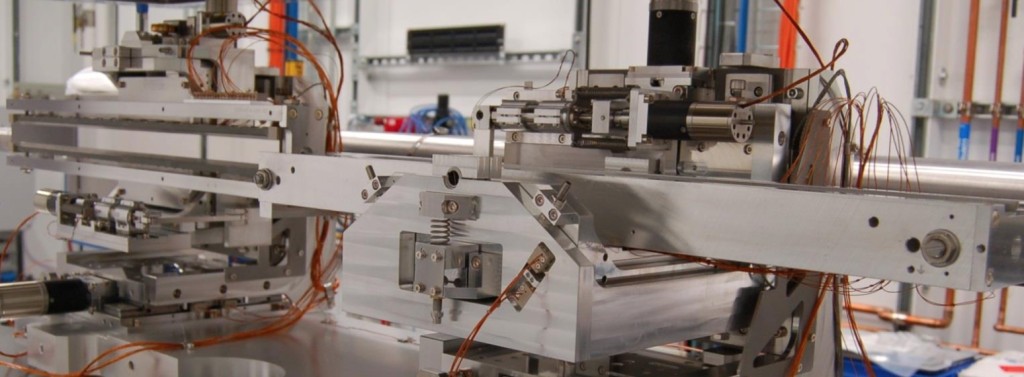Some may have been wondering what I have been up to lately!
At the beginning of the year, I started working on the ALS-U project, which is the upgrade of the Advanced Light Source, the main synchrotron at Lawrence Berkeley National Laboratory. The goal is to improve the facility with a Diffraction-Limited Storage Ring (DLSR), in order to increase the brilliance of the beam, so as allow scientists from all over the world to perform the most precise experiments, allowing bright and full coherent beams with diameters as small as 10 nanometers – or twice the width of a strand of DNA. (here’s a report on all the niceties you can do with such a tool: ALS-U: Solving Scientific Challenges with Coherent Soft X-Rays)
 The project is currently in Critical Decision 0 (CD-0), meaning that funds have been allocated for preliminary studies, and we are moving towards CD-1 (due next October). The funding for this project (>$200M) is contingent on a vote in the US senate, and while the current political climate is not in favor of science, upgrading the ALS to become the reclaim leadership in Generation IV light sources garners bi-partisan support.GenIV light sources are the next generation (see “The next ten years of X-ray science” in Nature Photonics 11, 12-14 (2017) – paywall) in synchrotron science, featuring a fully coherent, diffraction-limited x-ray beam — meaning that the performance of the tool is ultimately limited by physics. Once you get there, there is very little you can do to improve the properties of the light source!The difficulty of the project is that every element requires extreme precision and stability, what requires careful design and diagnostic tools. For instance, the meter-long mirrors that are used must have error figures in polishing better than 1nm — basically at the atomic scale: if you were to picture a beach, the flatness of that beach (~1km) would have to be a hundred times much better than the size of a single grain of sand (100μm). This is crazy, yet it can be done through Elastic Emission Machining (EEM), where you basically launch rubber balls at the mirror for months to flatten it out (abrasion no longer works, since a nanometer is already comparable to the size of the lattice.)
The project is currently in Critical Decision 0 (CD-0), meaning that funds have been allocated for preliminary studies, and we are moving towards CD-1 (due next October). The funding for this project (>$200M) is contingent on a vote in the US senate, and while the current political climate is not in favor of science, upgrading the ALS to become the reclaim leadership in Generation IV light sources garners bi-partisan support.GenIV light sources are the next generation (see “The next ten years of X-ray science” in Nature Photonics 11, 12-14 (2017) – paywall) in synchrotron science, featuring a fully coherent, diffraction-limited x-ray beam — meaning that the performance of the tool is ultimately limited by physics. Once you get there, there is very little you can do to improve the properties of the light source!The difficulty of the project is that every element requires extreme precision and stability, what requires careful design and diagnostic tools. For instance, the meter-long mirrors that are used must have error figures in polishing better than 1nm — basically at the atomic scale: if you were to picture a beach, the flatness of that beach (~1km) would have to be a hundred times much better than the size of a single grain of sand (100μm). This is crazy, yet it can be done through Elastic Emission Machining (EEM), where you basically launch rubber balls at the mirror for months to flatten it out (abrasion no longer works, since a nanometer is already comparable to the size of the lattice.)At the same time, the first mirror in the beam will have to withstand heatloads in the tens of kilowatts.Even with the best efforts in cooling designs, monitoring the aberrations for active correction of the beam is likely to be required, and that’s part of what I’m working on, as part of the Wavefront Preserving Mirror project, a joint project between APS, NSLS-II, LCLS and the ALS.
Soft X-Ray is important because it allows chemical specificity since it corresponds to the K-edge (i.e. the energy needed to ionize electrons from the inner electron shell of atoms) of many atoms. The problem is of course the these radiations get very strongly absorbed, and thus are very difficult to produce. [Here is a list of all the cool things this is meant to allow – science opportunity]
There is a global push in the world for generation IV light sources, which are divided between DLSR synchrotrons and Free-Electron Lasers. Among synchrtrons, the first (and only) Gen IV light source is MaxIV in Sweden, operated by Lund university. Other light sources around the world are staged for an upgrade, like SLS-II in Switzerland or Soleil in France.Free-Electron Lasers constitute the other part of GenIV (There are few in the world, such as LCLS at SLAC/Stanford, Fermi (at Elettra) in Italy, SACLA in Japan, and the brand new SwissFEL and European XFEL in Hamburg.) FELs are exciting for they produce intense (~10GW) flashes of light (~10fs) allow the study of very small time-scale phenomenon. A lot of very interesting phenomena can be studied that way, the drawback is that oftentimes samples get destoyed by the measurement, and that only one experiment can be carried out at a time. Synchrotrons are somehow more versatile (they can host over 40 experiments at the same time.)
